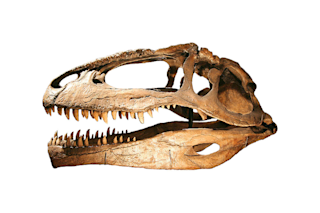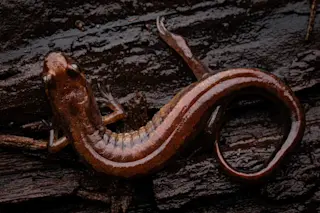For years, paleontologists and dinosaur aficionados alike have debated what is the largest land-dwelling carnivore of all time. In the one corner, there’s Tyrannosaurus rex, the terror of prehistoric North America. In the other, Giganotosaurus — an equally large dinosaur that stalked ancient Patagonia, and one of the last of an impressive lineage that ruled for tens of millions of years before tyrannosaurs rose to prominence.
To paleontologists, Giganotosaurus and its relatives are classified as carcharodontosaurs. Their name means “shark-toothed lizard,” established by the discovery of Carcharodontosaurus itself in 1931. But even as experts name new species from the U.S., Europe, South America, Africa, and Asia, these momentous meat-eaters can never quite seem to step out of the shadow of tyrannosaurs. That’s a shame. For millions of years, the situation was the other way around.
Giganotosaurus skeleton mount at the Fernbank Museum of Natural History in Atlanta, Georgia. (Credit: Jonathan ...














